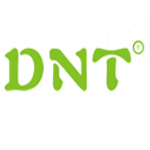China’s Automotive Aftermarket: A Strategic Opportunity
China is now the largest auto market in the world, and while automakers have previously focused on new auto sales, there has been recent interest in developing China’s automotive aftermarket for vehicle service and repairs. The domestic automotive aftermarket is relatively new in China and there are several characteristics unique to the China market.
China’s expanding auto aftermarket
Driven by huge growth in car sales, China’s stock of cars, especially older vehicles, is expanding dramatically. In 2009, China overtook the United States to become the largest new auto sales market in the world. China has experienced annual growth of roughly 20 percent over the last 10 years. Strong growth is forecast to continue despite some cities, such as Shanghai, Beijing and Guangzhou, introducing monthly license plate quotas.
The continued growth in new car sales is having the secondary effect of dramatically increasing the cumulative stock of cars in China. The average warranty period for vehicles in China is typically three years. According to LEK Consulting’s estimates, by 2017 the average age of cars will increase from three years to 4.5 years, the age when spending on aftermarket parts and services typically peaks. The number of out-of-warranty cars will almost triple during the same period, further driving demand for aftermarket products and services.
Prior experience indicates that these factors will create substantial demand for aftermarket parts and services. The size of the market has already increased dramatically from $10 billion in 2008 to $24 billion in 2012. This trend can only be expected to continue as China’s car fleet both increases and ages.
Assembly and wear-out repairs, including engine, frame, body and transmission repairs, and minor repairs are the two largest segments of the repair services market (by value), and are expected to remain the largest segments for the foreseeable future.
Mapping the auto aftermarket structure
Developing a winning strategy in China’s automotive aftermarket involves mapping the value chain, identifying key stakeholders, and determining how suppliers can best reach the customer. Product type, manufacturer background, geographic market, and development level of each city will affect each of these elements.
Manufacturing of auto parts is predominantly done by three types of companies: international original equipment (OE) suppliers, domestic OE suppliers, and dedicated aftermarket suppliers. The distribution and service is typically done either by the original equipment supplier (OES) network or the independent aftermarket (IAM) network.
Because the development of a large scale Chinese automotive market is relatively recent, chain service and repair stations have yet to be established on a wide scale. Traditionally, 4S stores controlled by the auto OEMs perform the bulk of auto servicing. 4S stores, which is short for “sales, service, spare parts, and surveys (customer feedback),” were developed in China to address the lack of service for vehicles after they had been purchased. Customers purchase cars from 4S dealerships, which also provide service after auto sales. Non-OEM aftermarket suppliers are mostly small, regional companies that sell parts through distributors that supply independent repair shops. Distribution in the independent channel is complex, and several layers of distributors may exist. Some distributors also have their own retail outlets and repair shops to further complicate matters.
There is a new, but small, direct channel emerging where component suppliers are opening self-owned and self-branded stores, or directly supplying products online. Bosch and Continental are examples of players moving down this path and other companies are studying if and how they should participate. Such channels are typically less common in other markets, but could be very effective in China as consumers are typically brand and price-sensitive and increasingly require verification that the parts they are purchasing are genuine. Besides opening new and profitable revenue streams, these direct channels help strengthen the manufacturer brands which in turn can help its core business.
Launching direct channels is not without challenges, and a company considering this route needs to carefully evaluate product mix, store economics and operational issues before moving down this path.
Industry development
Currently, 4S stores dominate sales and repair services in China, although chained repair shops are forecast to increase in relative importance in the coming years. Direct channels including self-owned and self-branded stores and online distribution may also be positioned for strong growth albeit from a small base.
Another important trend will be increasing levels of industry consolidation. Government policy directives have been issued in the last decade aimed at decreasing the number of auto-component suppliers as a means of increasing scale and competitive capabilities. The 11th Five-Year Plan called for a reduction in the number of component suppliers while increasing the competence of supplier capabilities. A National Development and Reform Commission 2006 mandate encourages merger and acquisition activity in the sector. Every year, hundreds of domestic transactions in China’s automotive sector suggest the government’s ambitions for a stronger home-grown automotive supplier base are gradually taking shape.
Customer segments and behaviors
Understanding customer demand and behavior is always critical to determine the right strategy to succeed. Here we examine consumer behavior, including where drivers go for aftermarket services, how service center usage differs, and what drives consumers’ selection of auto parts.
Currently, most care owners use 4S stores for their aftermarket needs. Consumers that purchase their vehicles privately–as opposed to company cars or government cars–are more likely to use non-4S service centers. These consumers are often more price sensitive and may have greater automotive knowledge. However, the OES network (i.e. 4S stores) dominates even the private car repair market, and has been estimated at 70 percent.
Service center usage
There are differences in consumer behavior depending on what service or product is required. Consumers who require more crucial mechanical repairs or issues concerning safety may be more inclined to use a 4S center. However, other factors including price, convenience, product availability or technical expertise influence or determine the service center selection.
Auto parts brands
Typically consumers prefer branded parts supplied by OEMs, with roughly 70 percent of consumers likely to choose 4S centers as their first choice. In general, customers purchase branded parts because they worry that non-OEM generic parts could be counterfeit. However, there are regional differences in the propensity for consumers to consider non-OEM parts. For example, consumers in coastal provinces are more willing purchase non-OEM branded parts that are perceived as less critical, such as windshield wipers, trusting that the quality will meet their requirements at a decent discount. Reported 4S auto part sales are also lower than the estimated demand for 4S parts. This is likely due to a willingness to use others brand and the prevalence of counterfeit parts in the marketplace.
Developing a winning strategy
The dynamic nature of the Chinese market means there are several key factors that will determine success in the market. Consumers can be very price sensitive and brand awareness is low. It is not uncommon for a BMW owner to shop around and save a few renminbi on an oil change for instance –haggling for bargains is a key trait of the Chinese consumer and car-owners are no different in that respect. In such an environment it becomes critical to position the company correctly and align products, price and channel strategies accordingly. The Chinese component supply chain is long and complicated, and there are typically many levels of distributors. Design and management of the go-to-market and supply chain assets will also determine success or failure in the industry.








